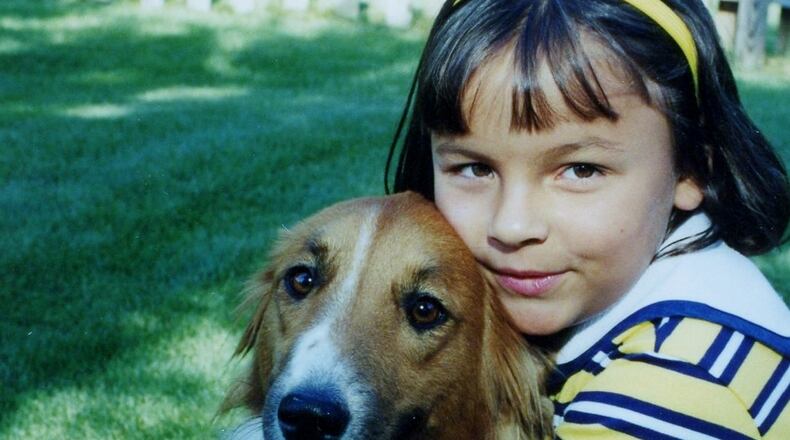According to the vetstreet com, “feeling the fur” can lower our heart rate and blood pressure because it releases the bonding hormone oxytocin.
So, when I stroke Teddy, our Lab, I am increasing my oxytocin level and possibly his. When I think about him or tell a story of his antics, my oxytocin levels will also rise.
“Having our dogs on our mind when life gets rough may be a good idea,” writes Karen London, PhD, for bark.com, “since oxytocin can reduce stress, increase pain tolerance and enhance well being.”
Dogs gain the most when being petted in a non-threatening way. One caveat is that I’m talking about the family dog. A strange dog may perceive the rubbing as a form of aggression.
So how did we know how to pet Teddy?
It started with our passed dog, beautiful, multiple- breed, anxiety-ridden Lucy. Jordan, our daughter, a grade-schooler at the time, wanted nothing more than to rub Lucy from her nose to her tail. Lucy wasn’t ready for all that “loving” and would back away and, usually, head for her bed.
From reading books by dog trainers and watching videos on YouTube, we learned how to give Lucy the perfect tummy rub.
First, we learned when Lucy wanted to be rubbed. She would come lie down near one of us, turn over, tail wagging.
Teddy turns over, tail wagging, just about every time one of his “humans” passes by. We could be carrying a mountain of dirty clothes and he gives us a look that suggests we put down the pile and immediately rub his tummy.
Teddy greets our family and friends with a hearty bark, then a toy. Finally, the canine will roll over for a quick tummy rub.
We learned through trial and error where Lucy loved to be stroked. Her tummy was her favorite spot. As she aged, she loved to have her hips rubbed, too. She didn’t like to be petted on the top of her head or rubbed behind her ears.
Teddy enjoys having his chest, hips and neck rubbed. He also likes it when one of his “humans” rubs behind his ears. If he could have it his way, and he usually does, his chest and tummy would be rubbed multiple times a day.
It was also important to gently rub Lucy. Josie F. Turner at animalwised.com writes that stroking a dog quickly and erratically can upset it. On the other hand, stroking the pooch slowly and gently, especially on its back, can transmit a sense of calmness.
Ed, my husband, and I learned to rub Lucy’s tummy in the same direction as her fur laid. As Jordan learned how to rub Lucy, the dog sought her out more than Ed or me.
Finally, we watched to see if Lucy was relaxing as we rubbed her tummy. When she was relaxed, she’d lean into us for more of the same.
We know when Teddy’s relaxed. His body goes limp and his eyes slowly close.
Sometimes when Ed reads the newspaper, Teddy snuggles next to him. It’s not uncommon for Ed to stroke the dog’s fur. Often the gentle motions will lull the loyal follower to sleep. His fearless leader, too.
Instructions on how to rub a dog’s tummy
- www.youtube.com/watch?v=wI4VD6N42ow
- www.wikihow.com/Rub a Dog's Tummy
- www.wikihow.com/Pet a Dog
About the Author

